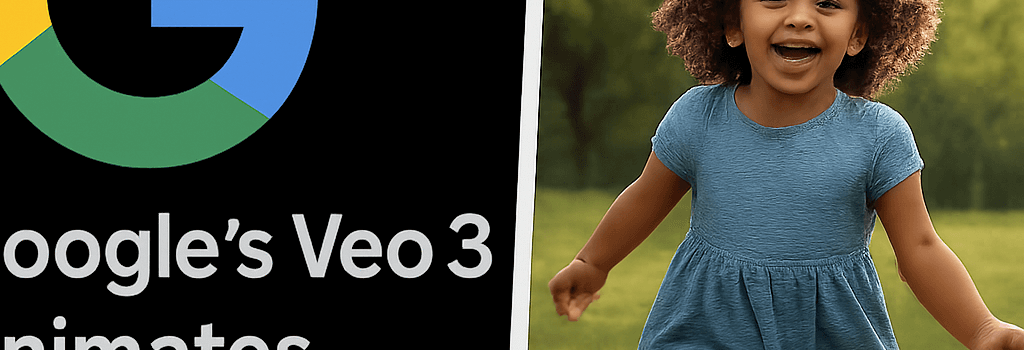Google’s Veo 3 Animates Photos with Gemini

Google’s Gemini app has just been upgraded with a powerful photo-to-video capability powered by its latest Veo 3 model. Subscribers on the AI Pro and AI Ultra plans can now upload a still image, add a text prompt, and receive a fully rendered, eight-second video complete with speech, music, and ambient audio.
Background on Veo 3 and Gemini
Since its May debut, Veo 3 has generated headlines for producing remarkably realistic AI videos from text prompts alone. Under the hood, Veo 3 builds on Google’s Pathways architecture, combining a 40 billion-parameter multimodal transformer with a diffusion-based video synthesis pipeline. The result is a model that can handle simultaneous generation of frames, audio tracks, and voice synthesis, all in a single end-to-end network.
Model Architecture and Technical Specifications
- Parameters: ~40 billion
- Compute Backend: Google TPU v4 Pod slices for parallel inference
- Maximum Output: 720p resolution at 24 fps, up to 8 seconds in length
- Audio: Integrated text-to-speech with neural vocoder; supports background music and effects
- Latency: 3–5 minutes per video on average (varies by queue and load)
How to Create Videos from Photos
- Open the Gemini app or web interface and select the Video tab.
- Upload your reference image (JPEG, PNG up to 10 MB).
- Enter a detailed prompt, specifying actions, dialogue, and audio cues.
- Click Generate and wait for the Veo 3 pipeline to produce your clip.
- Review the output; if needed, tweak your prompt or image and retry.
This workflow mirrors the earlier Flow AI tool available to filmmakers, but now it is integrated directly into Gemini’s streamlined UX.
Performance and Limitations
While Veo 3 delivers impressively fluid animation, there are trade-offs:
- Daily Quota: AI Pro users get 3 videos/day; AI Ultra users get 5/day.
- Output Constraints: Locked at 720p and 8 seconds to balance quality vs. compute load.
- Variability: Results can deviate from prompts; fine-tuning may require multiple attempts.
- Compute Costs: Each generation consumes several hundred TPU-core-seconds, driving the need for strict quotas.
Integration with Google Cloud for Developers
In parallel with the app rollout, Google has announced plans to expose Veo 3 via its Vertex AI API later this quarter. Developers will be able to embed photo-to-video generation into web apps and mobile services, leveraging Google Cloud’s auto-scaling TPU infrastructure. Early benchmarks suggest that batch processing pipelines can achieve throughput of 20+ videos per hour per TPU v4 slice.
Ethical Considerations and Safety Measures
“Veo 3’s realism is a double-edged sword,” says Dr. Maria Chen, head of AI Ethics at the Center for Digital Trust. “Google’s SynthID watermark is a step forward, but detection tools must keep pace as generative models evolve.”
To mitigate misuse, Gemini embeds a SynthID digital watermark in every frame. Google also employs intensive red-teaming, adversarial testing, and content filters to prevent disallowed outputs. However, experts advise that watermark robustness may degrade if videos are heavily processed after generation.
Looking Ahead: Trends in AI Video Generation
Industry observers expect that future updates will increase video length, resolution (up to 1080p or 4K), and interactive editing features. Competitors like Meta’s Make-A-Video and Stability AI’s video diffusion suite are racing to match or exceed Veo 3’s capabilities. Meanwhile, Google’s roadmap hints at real-time generation demos and tighter integration with Workspace tools for marketing and creative teams.
Conclusion: With its new photo-to-video feature, Gemini and Veo 3 are pushing the boundaries of accessible AI content creation. While current limitations on resolution, length, and quota remain, the technological underpinnings point to a future where turning a single snapshot into a cinematic clip is routine for professionals and hobbyists alike.